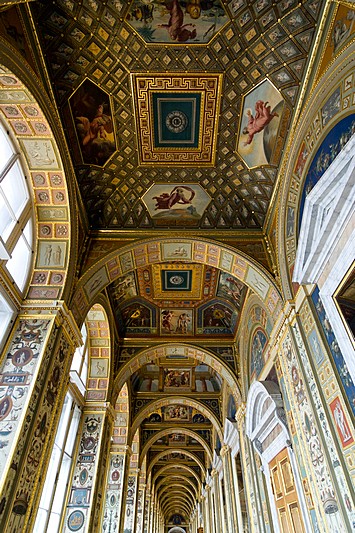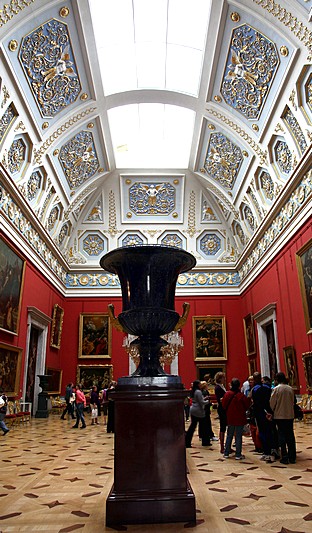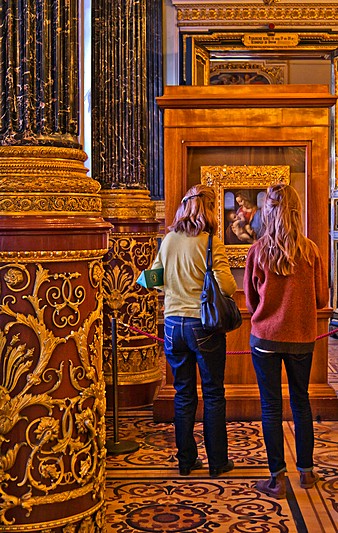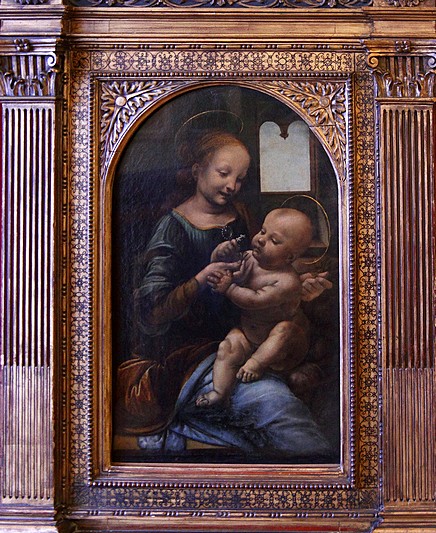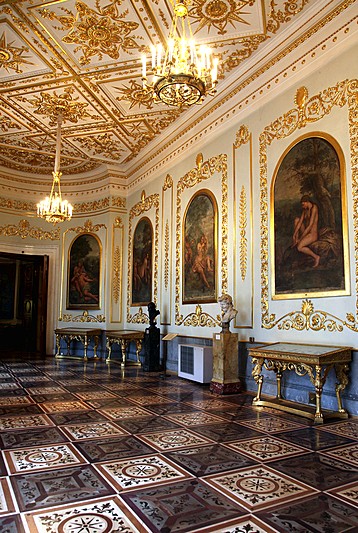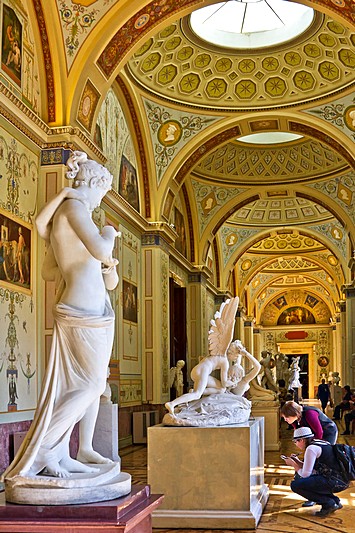Italian walk No.2 - The Italian Legacy in St. Petersburg
Our second Italian walk through St. Petersburg begins at the Alexander Nevsky Monastery, the original plans of which were drawn by the first great Italian architect of the city, Domenico Trezzini, and the cemetery of which, the final resting place of St. Petersburg's great and good, holds the graves of architects Carlo Rossi and Giacomo Quarenghi, opera singer Angiolina Bosio, and composer Catarino Cavos. From there, it is necessary to take the metro (or you can travel by bus or trolleybus) along Nevsky Prospekt to Gostiny Dvor, St. Petersburg's historic shopping arcade (built to a simplified version of a design by Francesco Barolomeo Rastrelli).
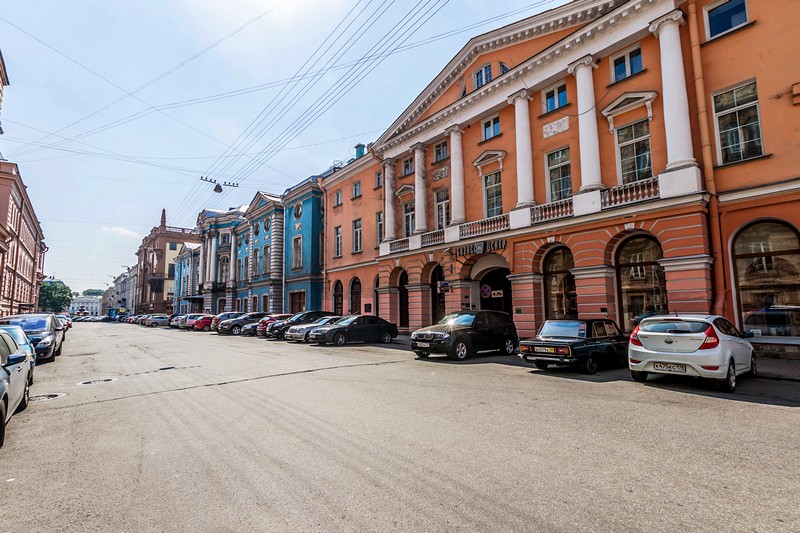
From there it is a short walk along Sadovaya Ulitsa to the junction with Italyanskaya Ulitsa ("Italian Street"), named after the Italian Palace and the Italian Garden. Built in 1711 to host assemblies of St. Petersburg's nobility, the Italian Palace stood on the opposite bank of the Fontanka River and was designed in the Italian style. The Italian Gardens, meanwhile, occupied the land between the Moyka River, the Griboedov Canal and Sadovaya Ulitsa, part of which is now covered by Mikhailovskiy Garden, Mikhailovskiy Palace and Ploshchad Iskusstv (Arts Square), all the works of Carlo Rossi. Although the name has lost its original significance, Italyanskaya Ulitsa has retained its Italian character in that roughly half the buildings along the street were designed by Italian architects. Apart from those buildings designed or partly designed by Rossi, Luigi Rusca built the Jesuit College Building (No. 1) and the beautiful Building with Four Colonnades (No. 23).
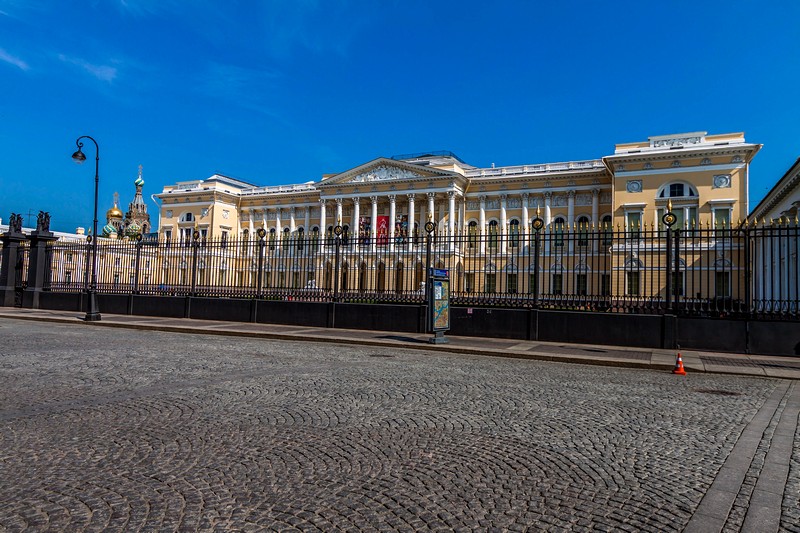
The Mikhailovskiy Palace is, of course, now home to the State Russian Museum's main collections. Although it is a museum of Russian national art, it still finds space to display works by several Italian artists who can be considered "Russian" in the sense that they built their careers here in St. Petersburg. Among them are Stefano Torelli, Pietro Antonio Rotari, Francesco Fontebasso and, the most noteworthy, the great Italian-Russian Academicist Fidelio Bruni. Francesco Bartolomeo Rastrelli and Carlo Rossi are among the dignitaries whose portraits hang in the museum. Moreover, Rossi was not the only Italian to work on the building of the Mikhailovskiy Palace - the decorative painter Giovanni Scotti was responsible for the frescoes that once covered several of the palace's ceilings. In front of the main entrance to the palace stand two lions modeled on those at the Loggia dei Lanzi in Florence.
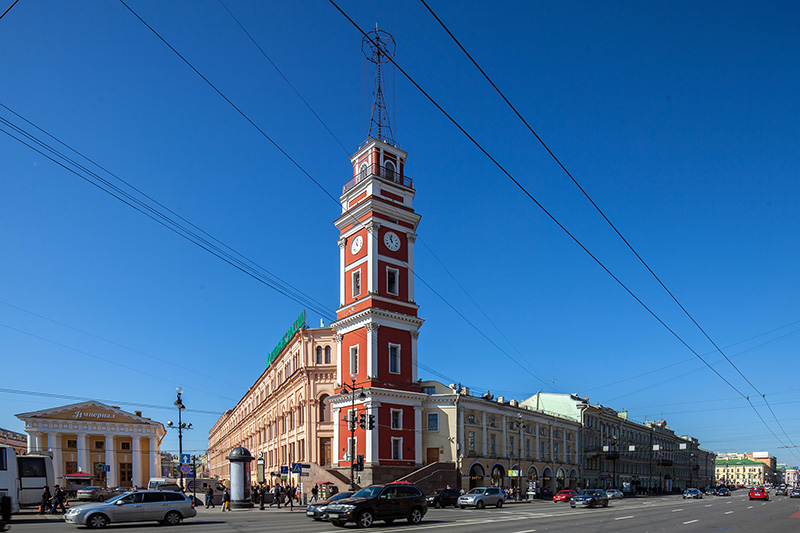
Walking back to Nevsky Prospekt across Ploshchad Iskusstv and along Mikhailovskaya Ulitsa, we pass the Mikhailovsky Theatre and the Main Hall of the St. Petersburg Philharmonia, both the works of Rossi, and both regular venues for visiting Italian performers (until recently, the young Milanese conductor Daniele Rustioni was Principal Guest Conductor at the former).
Across Nevsky Prospekt from the end of Mikhailovskaya Ulitsa stands the Rusca Portico, one of Luigi Rusca's most notable works. Nearby is the City Duma Building, its striking tower the work of the little-known architect and designer Giacomo Ferrari, an assistant to Giacomo Quarenghi, who designed the neighbouring Silver Rows along Nevsky Prospekt (No. 31). Opposite, the Catholic Church of St. Catherine was completed by Antonio Rinaldi, who then became head of the Catholic congregation in the city. Among the many other Italians connected with the cathedral, Vincenzo Brenna lived in one of the cathedral's residential buildings on Nevsky Prospekt.
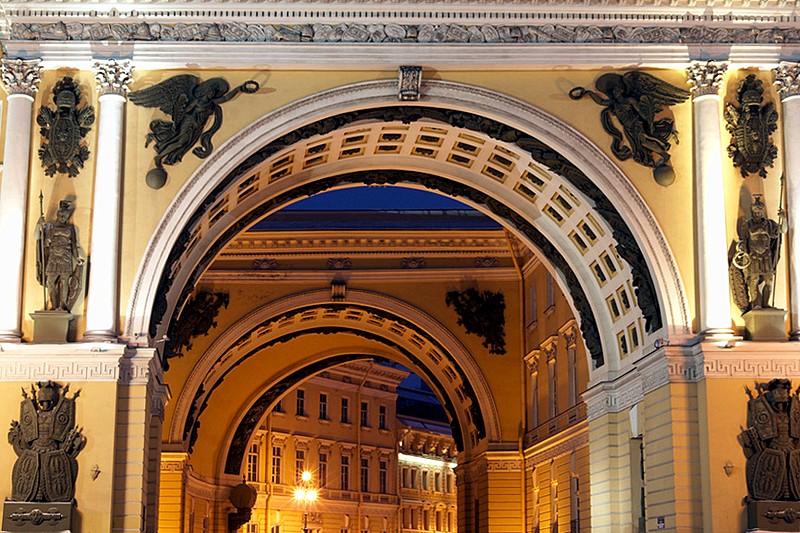
A short walk along Nevsky Prospekt brings us to Kazan Cathedral, which architect Andrey Vorokhin modeled on St. Peter's Basilica in Rome. Another building with strong Italian antecedents is the neo-Renaissance Wawelberg House (7-9, Nevsky Prospekt), which draws heavily on the Doge's Palace in Venice. From there it is a short walk to the end of Nevsky Prospekt and round the corner onto Palace Square. The sumptuous Winter Palace is not only the most famous of Francesco Bartolomeo Rastrelli, but also nowhere else in St. Petersburg has such indelible links to Italian art and culture as the complex of buildings that make up the Hermitage. Here are countless examples of Italian art, from Ancient Roman statuary in the Antiquities Halls to masterpieces by Leonardo da Vinci, Raphael, Titian, Michelangelo, Caravaggio, Tiepolo and many others (Italain painters occupy an astonishing 30 rooms of the State Hermitage Museum).
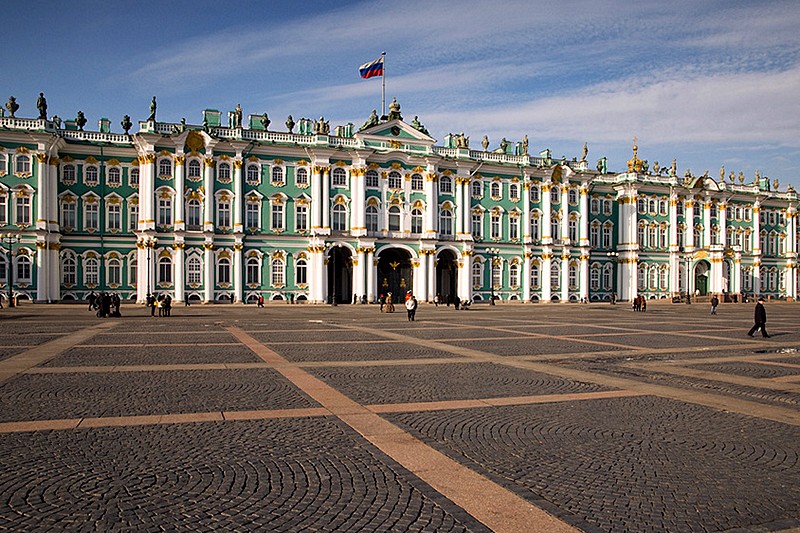
As well as Rastrelli's halls, several of the Winter Palace's interiors were designed by Giacomo Quarenghi, who also built the Hermitage Theatre. On the theatre's stage and elsewhere in the Winter Palace, scores of Italians singers, dancers and musicians performed, especially during the reign of Catherine the Great, among them the great opera composers Baldassarre Galuppi and Giuseppe Sarti. The original interiors of the theatre and the sets for countless opera and ballet productions there were created by the groundbreaking scene painter Pietro Gonzaga.
It is of course possible to spend several hours, if not days, in the Hermitage Museum, but if you prefer to continue walking, you can continue back across Palace Square and under the magnificent arch of the General Staff Building, another of Carlos Rossi's monumental Empire-style edifices, onto Bolshaya Morskaya Ulitsa. Follow the road across Nevsky Prospekt and continue about 400m to Isaakievskaya Ploshchad. St. Isaac's Cathedral was partly inspired by Palladio's Villa la Rotunda near Vicenza and, although built by the French architect Auguste de Montferrand (it replaced the third St. Isaac's Cathedral, built by Antonio Rinaldi), features a series of superb wall paintings by Fidelio Bruni.
Continue along Ulitsa Bolshaya Morskaya and take the second left onto Ulitsa Glinka until you reach Teatralnaya Ploshchad (about 15 minutes' walk), where at No.10 you can find the Consulate General of Italy in St. Petersburg. To your left is the St. Petersburg Conservatory, and to your right the magnificent building of the Mariinsky Theatre. Here then are two more of St. Petersburg's great cultural institutions, each with its own multiple links to Italy. The former was built on the site of the Bolshoy Kamenny Theatre, originally designed by Antonio Rinaldi. St. Petersburg's grandest theatre for over a century, it was opened in 1783 with the premier of Giovanni Paisiello's opera Il mondo dela luna and for several years was home to the Italian Opera Company of the Imperial Theatres. For nearly forty years (1803-1840), maestro Catarino Cavos worked as here the musical director of the Italian and Russian Opera Companies. He also composed numerous operas and ballets on Russian folk themes, anticipating and inspiring the flowering of Russian national opera in the next generation. It was also here that Giuseppe Verdi's opera La Forza del Destino received its world premier in November 1862, with the great man himself in attendance.
One of his sons, Alberto Cavos, became Chief Architect of the Imperial Theatres and supervised reconstruction of the building (1826-1836), while his younger son Giovanni (Ivan) Cavos would also become director of the Italian Opera Company. Another great Italian composer, Caesare Pugni, several of whose ballets were performed on the stage of the Bolshoy Kamenniy Theatre, was among the first teachers at Anton Rubinshtein's Conservatory, although before school moved to its current site in the 1890s.
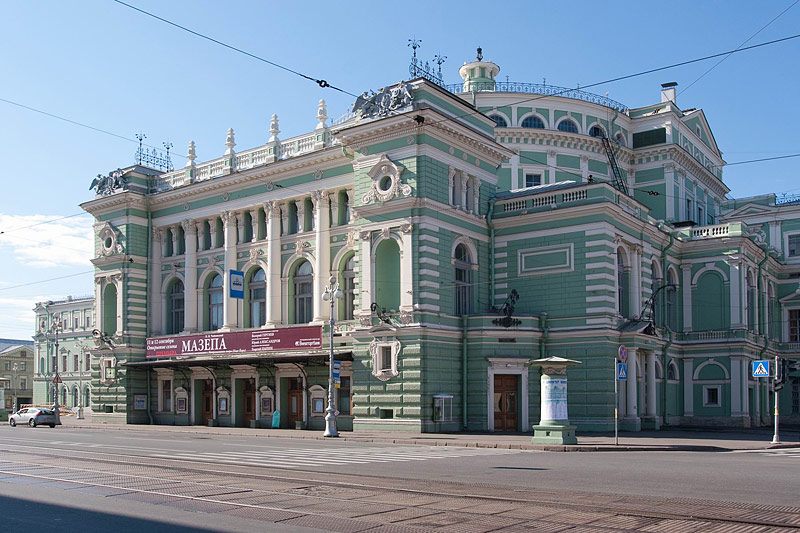
On the opposite side of the square, meanwhile, the Mariinsky Theatre, like the Bolshoy Theatre in Moscow, was also designed by Alberto Cavos. Before that, the site had been occupied by the wooden building of the Theatre Circus, which owed its origins to another Italian, Alessandro Guerra, who established the first circus on the site in 1845. As the Mariinsky, the building saw the St. Petersburg school of ballet rise to the very pinnacle of innovation and mastery and in the late 19th and early 20th century. A key figure in this process was Enrico Cecchetti, who came to St. Petersburg in 1887 direct from his position as Principal Dancer at La Scala in Milan and revolutionised male dancing in the ballet both with his own flamboyant and expressive style and later as a teacher to several of the Mariinsky's greatest ever stars, including Vaslav Nijinsky, Mathilde Kschessinska and Anna Pavlova. His teaching method, developed in St. Petersburg, is still used to train dancers throughout the world.
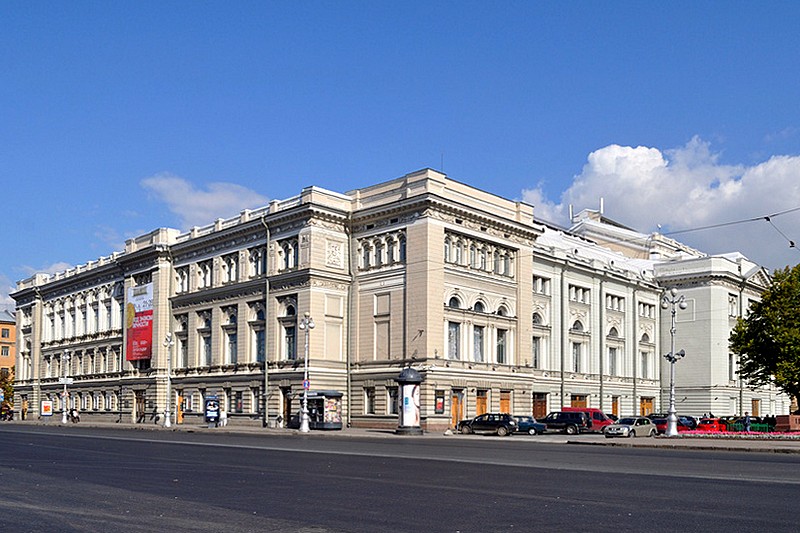
Here we come to the end of our second Italian walking tour. If you time it right, you can arrive just in time to catch the evening performance at the Mariinsky, which currently has around 20 of the great Italian operas in its repertoire.

